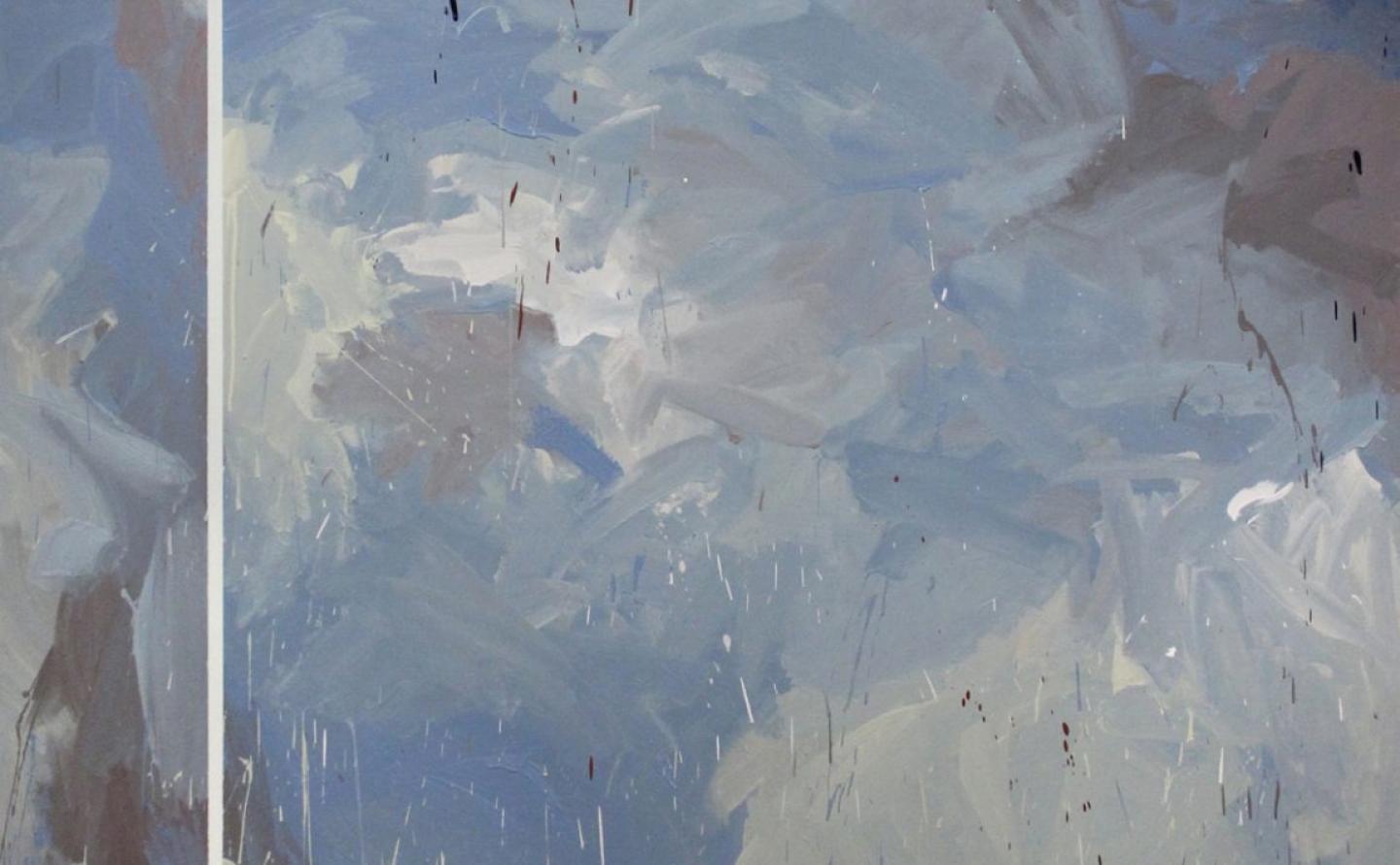International Colloquium
From Record to Art | The Record as Art
Music, visual arts, cinema
September 16-17, 2021
Organized as part of the exhibition
Remixer avec Charles Gagnon
Centre d’exposition de l’Université de Montréal
Call for Papers
From May 1 to September 30, 2021, the Centre d’exposition de l’Université de Montréal will present an exhibition entitled Remixer avec Charles Gagnon. This exhibition – co-curated by Karine Bouchard (UQTR) and Serge Cardinal (Université de Montréal) – will be devoted to the relationship between the artist Charles Gagnon’s creative practice, his works, and his record collection. Based on the fact that his “painting workshop was also a sound studio with several synthesizers and a wide array of recording and sound processing equipment”; based on the fact that Charles Gagnon “undertook various experiments recorded on tape, using his altered or unaltered voice, or even records and re-recordings of radio broadcasts” (Gervais, 2009, p. 21); and based on the fact that his music library of over 3000 vinyl records occupied significant space in his workshop, the exhibition will explore the relationships between the music lover “with the eclectic and specialized tastes” and the artist, painter, photographer, and filmmaker. Two main queries will guide the visual and sonic staging and design of this exhibition. Is there resonance to be found between the musical practices that captured Charles Gagnon’s attention and his creative process? Is there resonance to be found between the visual representation of the music found on his records and the aesthetic inventiveness of his pictorial, photographic, or cinematic works? In other words, can we rediscover Charles Gagnon’s work and practice by listening to and looking at his records?
This is the context in which the colloquium Du disque à l’oeuvre. Musique, arts visuels, cinéma will take place. The colloquium will host papers relating to creative practices in which the relationships between music and visual arts or cinema hold singular value. More specifically, this colloquium aims to pursue two complementary lines of inquiry.
First line of inquiry: relationships between recorded music and visual art practices. Research on relationships of influence between music and visual arts have mainly focussed on the adaptation or appropriation of musical forms, elements, or processes in painting, photography, or cinema. This colloquium would first like to refocus attention on music that has been recorded (on reel-to-reel, cassette tape, vinyl record, compact disc, digital device) and thus that becomes the focus of a listening experience that spans collecting to remixing, by way of repetition, looping, thematic grouping, playlists, wear and tear or breakage, retreating into private listening or invading public spaces, etc. This colloquium would also like to foster the exploration of relationships of interference between this experience of listening to recorded music and 1) the creative processes of artists in the visual arts or 2) the poetic processes specific to works or practices (painting, photography, cinema, art film, installation, performance, etc.). Du disque à l’oeuvre. From record to artwork.
Second line of inquiry: the vinyl record as multimedia object. The vinyl record can be understood as one of the first examples of what is known today as a “multimedia” format. From 1950 until its current revival, the vinyl record as an object offered a unique mix between visual practices of the pictorial and photographic avant-garde, forms of critical literature (so-called “liner” notes), and sonic content (music or voices engraved on the record). The combination of these three mediums was an opportunity to garner broad support for contemporary visual art or musicological discourse, but was also a space of interference between music, image, and discourse – a space offering unprecedented aesthetic and interpretive paths. This colloquium would like to promote exploring the record as a place of layered aesthetic experience or of mutual interpretation between the music, its visual representation, and its discursive presentation. Du disque à l’oeuvre. The record at work.
Paper proposals should be a maximum of 350 words; they should be accompanied by a brief biobibliography; and they should be sent to
serge.cardinal@umontreal.ca, no later than October 2, 2020.
Du disque à l’oeuvre. Musique, arts visuels, cinéma | International Colloquium | Centre
d’exposition de l’Université de Montréal | September 16-17, 2021.
Co-Curators
Karine Bouchard (UQTR), Serge Cardinal (Université de Montréal, OICRM).
Scientific Committee
Karine Bouchard (UQTR), Serge Cardinal (Université de Montréal, OICRM), Frédéric Dallaire (Université de Montréal, HEXAGRAM), Michel Duchesneau (Université de Montréal, OICRM), Jonathan Goldman (Université de Montréal, OICRM).
Organizers
La création sonore : cinéma, arts médiatiques, arts du son (www.creationsonore.ca), Observatoire interdisciplinaire de création et de recherche en musique (www.oicrm.org), Centre d’exposition de l’Université de Montréal (www.centre-expo-udem.com).
Indicative Bibliography
AUSLANDER, Philip (2004). «Looking at Records», dans Jim Drobnick (dir.), Aural Cultures, Toronto: YYZ Books.
BELLOÏ, Livio (et al.) (2015). Boucle et répétition. Musique, littérature, arts visuels, Liège: Presse universitaires de Liège.
BLOCK, Ursula et Michael GLASMEIER (1989). Broken Music: Artists’ Recordworks [catalogue d’exposition], Berlin: Daadgalerie.
BORN, Georgina (2009). «Afterword Recording: From Reproduction to Representation to Remediation», dans Nicholas Cook et al. (dir.), The Cambridge Companion to Recorded Music, Cambridge/New York: Cambridge University Press, pp. 286–304.
CLARKE, Eric F. (2007). «The Impact of Recording on Listening», Twentieth-Century Music, vol. 4, n° 1, pp. 47–70.
COOK, Nicholas (2015). «Hearing Images, Seeing Sounds: Listening Outside the Modernist Box», dans Gianmario Borio (dir.), Musical Listening in the Age of Technological Reproducibility, Farnham: Ashgate, pp. 185-202.
COOK, Nicholas (1998), «The Domestic Gesamtkunstwerk, or Record Sleeves and Reception», dans Thomas Wyndham (dir.), Composition - Performance – Reception: Studies in the Creative Process in Music, Aldershot: Ashgate, pp. 105-117.
DE BEAUPRÉ, Antoine (et al.) (2016). Total Record: Photography and the Art of the Album Cover, New York: Aperture.
GERVAIS, Raymond. “Charles Gagnon et le son”, in Monika Kin GAGNON (Ed.), Charles Gagnon: 4 Films, booklet accompanying the DVD set Charles Gagnon: 4 Films, Montréal, Spectra Media, 2009, p. 21.

